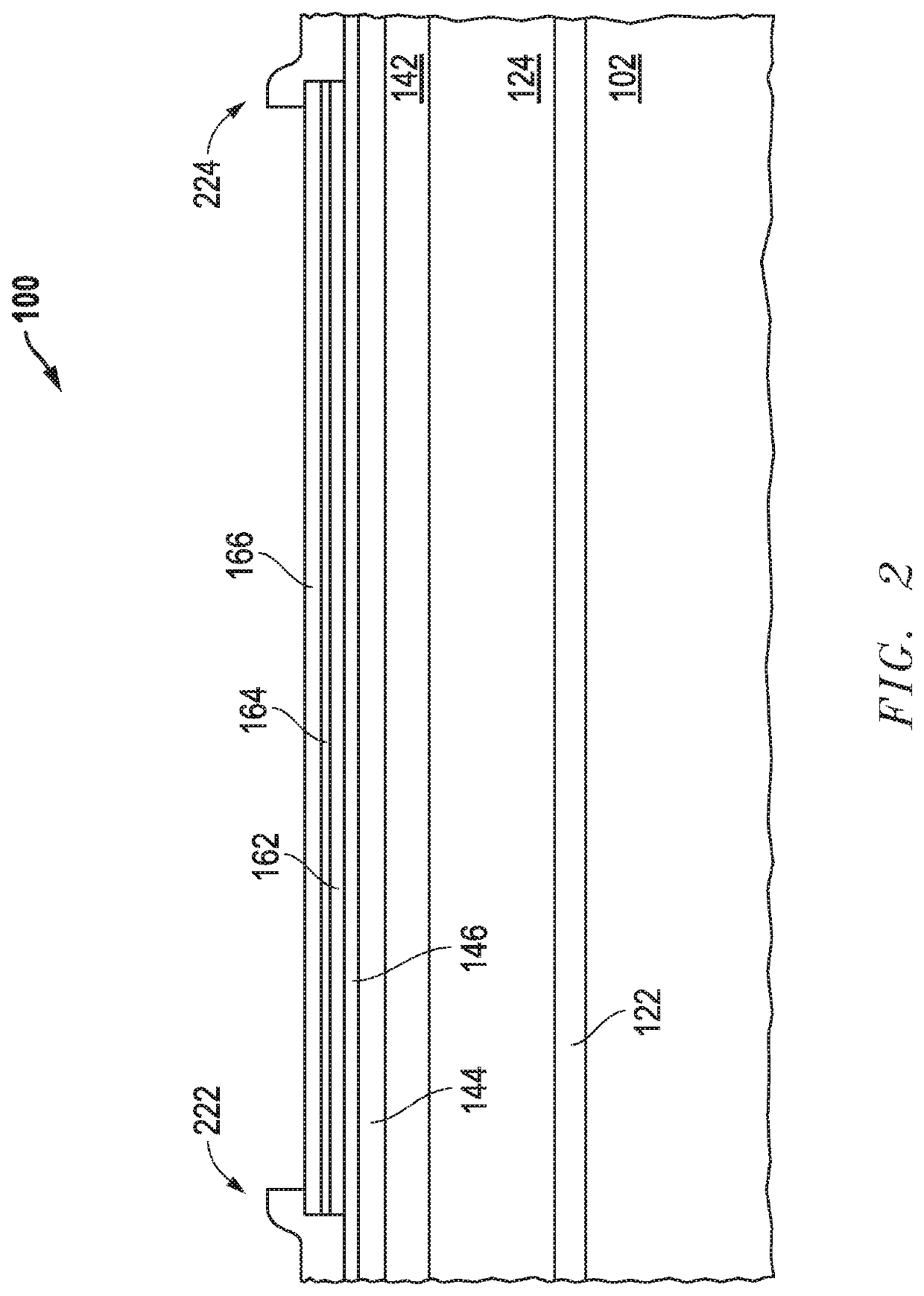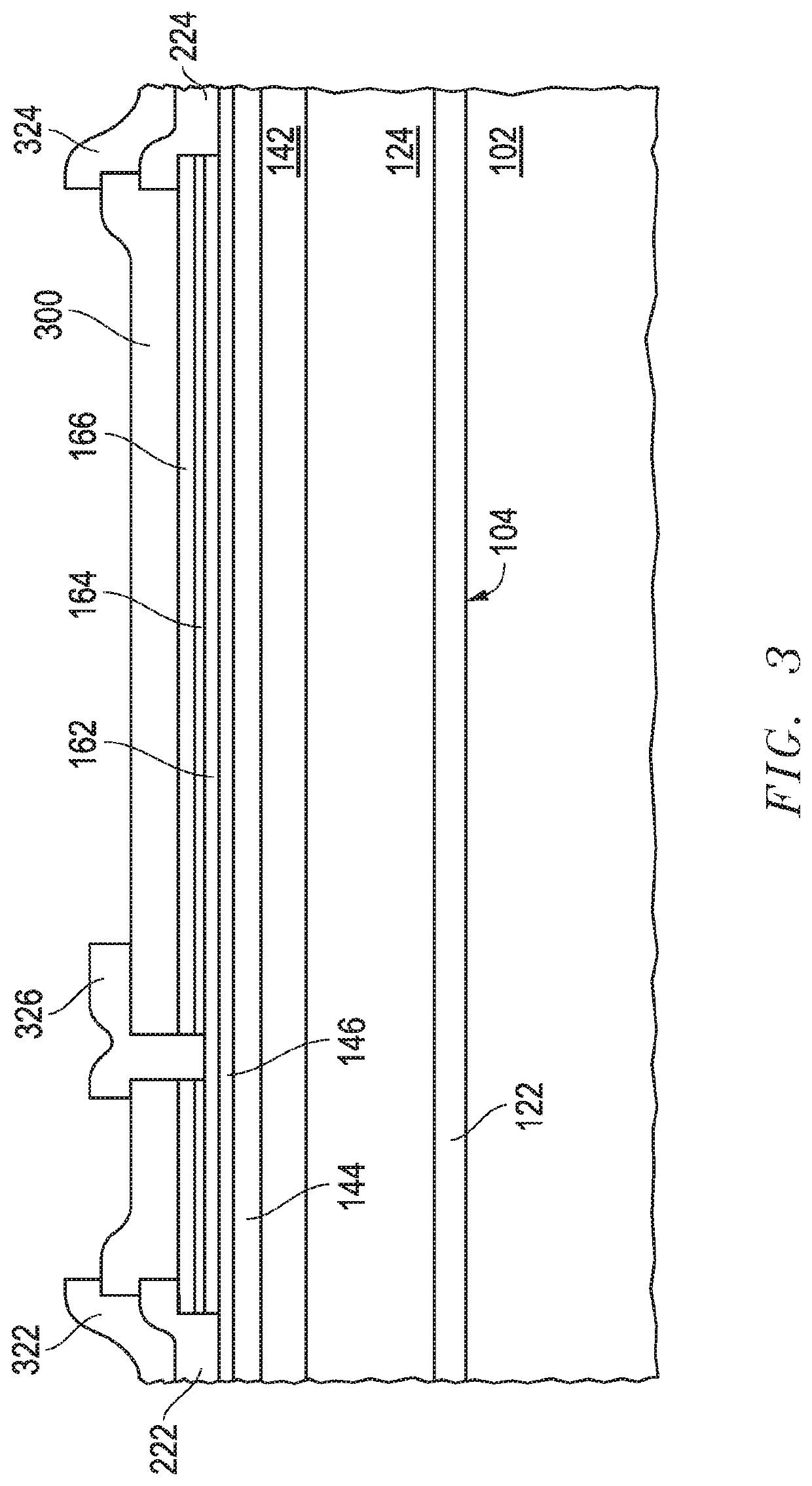Process of forming an electronic device including a transistor structure
a transistor and electronic device technology, applied in the direction of semiconductor devices, basic electric elements, electrical equipment, etc., can solve the problems of current collapse, carrier trapping, improved performance, and unfavorable dynamic on-state resistance,
- Summary
- Abstract
- Description
- Claims
- Application Information
AI Technical Summary
Benefits of technology
Problems solved by technology
Method used
Image
Examples
embodiment 1
[0074] An electronic device can include a transistor structure. A process of forming the electronic device can include providing a workpiece including a substrate, a first layer, and a channel layer including a compound semiconductor material; and implanting a species into the workpiece such that the projected range extends at least into the channel and first layers, and the implant is performed into an area corresponding to at least a source region of the transistor structure.
[0075]Embodiment 2. The process of Embodiment 1, wherein implanting the species is performed such that the area corresponds to all or substantially all area occupied of the transistor structure.
[0076]Embodiment 3. The process of Embodiment 1, wherein the workpiece is not exposed to a thermal cycle at most 750° C. after implanting the species.
[0077]Embodiment 4. The process of Embodiment 3, wherein implanting the species is performed such that the species includes H+ ions.
[0078]Embodiment 5. The process of Embo...
embodiment 19
[0092] An electronic device can include a HEMT structure. A process of forming the electronic device can include providing a workpiece that includes a substrate; a first layer overlying the substrate, wherein a particular layer within the first layer is carbon doped at concentration of at least 1×1016 atoms / cm3; an intermediate layer overlying the first layer, wherein the intermediate layer includes Al(1-x)GaxN, where 016 atoms / cm3; a channel layer overlying the intermediate layer, wherein the channel layer includes GaN and is carbon doped at a concentration less than the intermediate layer; and a barrier layer overlying the channel layer, wherein the barrier layer includes In(1-a-b)AlaGabN, where 0≤a≤1, 0≤b≤1. The process can further include forming a source electrode and a drain electrode, wherein the source and drain electrodes contact to the barrier layer; forming a gate electrode overlying the barrier layer and between the source and drain electrodes; and implanting a species i...
PUM
| Property | Measurement | Unit |
|---|---|---|
| energy | aaaaa | aaaaa |
| energy | aaaaa | aaaaa |
| tilt angle | aaaaa | aaaaa |
Abstract
Description
Claims
Application Information
 Login to View More
Login to View More - R&D
- Intellectual Property
- Life Sciences
- Materials
- Tech Scout
- Unparalleled Data Quality
- Higher Quality Content
- 60% Fewer Hallucinations
Browse by: Latest US Patents, China's latest patents, Technical Efficacy Thesaurus, Application Domain, Technology Topic, Popular Technical Reports.
© 2025 PatSnap. All rights reserved.Legal|Privacy policy|Modern Slavery Act Transparency Statement|Sitemap|About US| Contact US: help@patsnap.com



